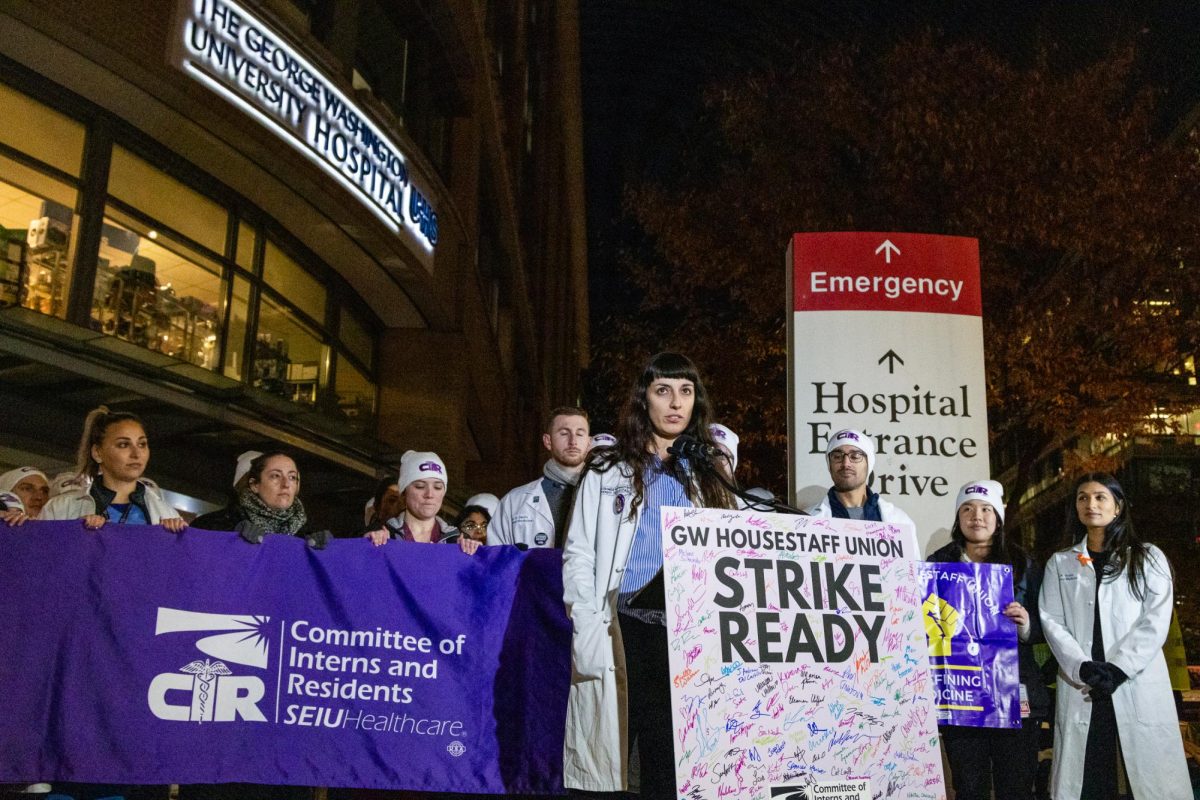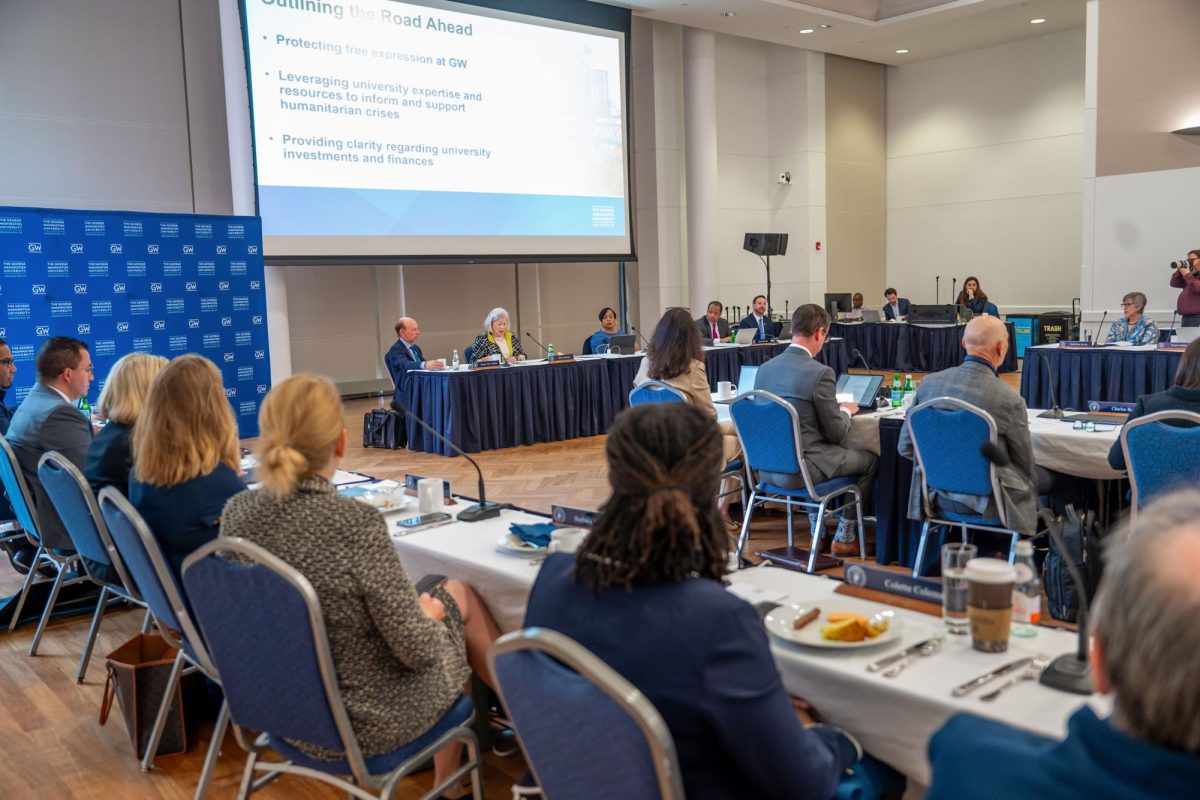The nation’s highest court upheld race-conscious admissions policies at the University of Texas Monday, but also called for a closer review of the college’s ability to achieve diversity without considering race.
In a 7-1 decision, the case was sent back to the lower courts for a second look at whether the college’s policy was justified because other race-blind options were not effective.
“The University must prove that the means chosen by the university to attain diversity are narrowly tailored to that goal,” Justice Anthony Kennedy wrote for the majority.
While the ruling is directed at public institutions, private universities are also eyeing the outcome. Based on Title VI of the 1964 Civil Rights Act, private schools receiving federal funds, like GW, must follow federal laws against racial discrimination.
GW filed an amicus brief supporting the University of Texas in August 2012 alongside nine other universities, including Northwestern, Emory and Tulane universities.
A GW law professor, Alan B. Morrison, explains this decision’s impact on higher education.
Hatchet: In the short and long term, would you say that this case is a win for those in favor or for those against affirmative action?
Alan B. Morrison: I would say that it’s a slight win for those who oppose affirmative action … The court said that the [University of Texas] continues to get deference from the courts on whether or not diversity is an appropriate factor to take into account, but that it’s up to the courts to establish that the program is as narrow as it could be as there are no reasonable alternatives. And [the majority] said that the lower court was mistaken, here, to give the university deference on the question of whether these alternatives were recently necessary or not. So that was a win for the opponents [of affirmative action].
If these cases can be brought and if their plaintiffs are willing to go through discovery and trials, the plaintiffs are more likely to win than before Fisher [v. University of Texas]. But it’s going to be very hard for challengers to hit home runs… These cases will continue to be narrowly decided and so opponents will be less likely to want to bring them because of what it will take to win them.
Hatchet: Did the specificity of the University of Texas’s Top 10 admissions program influence the decision, making it a narrow decision rather than a sweeping decision on affirmative action?
Morrison: No, I don’t think it was that Texas had the 10 percent program. I think the court was not willing to step away from the notion that diversity is a positive good if a university wants to use it. That would have been a quite big step and it’s true that the plaintiffs didn’t make that challenge in this case, but that wouldn’t necessarily have stopped the court if it had five votes to strike it down. I don’t think Justice Kennedy is anywhere near going that far. One of the interesting things is that the decision is only 13 pages for a case that sat around since October and so there’s quite well informed speculation that this was not the first draft of the opinion.
Hatchet: The decision reads that, “The reviewing court must ultimately be satisfied that no workable race-neutral alternatives would produce the educational benefits of diversity” and Justice Kennedy writes that this would have to be proven through “strict scrutiny.” Does this requirement set the stage for more lawsuits questioning the necessity of affirmative action practices?
Morrison: Under the court’s opinion, the public is going to learn much more about how these programs actually operate in order for the state to be able to justify them.
My own view is that these programs are best defended when they are made public and defended in a public arena rather than hidden behind, ‘We’re doing everything O.K.’ And I think we’re going to see a lot more information about how these programs actually work and perhaps a debate within the university community about them, which is in my view, all to the good.
I think what there may be is more internal debate within the university and more consideration of other alternatives when other factions within the university – faculty, admissions people, students, alumni and others – find out about how the program works and decide whether this is the best system they can have. I think that in a democratic society, having internal debate before you get to court is a very good thing.
Hatchet: The Grutter v Bollinger case of 2003 upheld affirmative action by a slim 5-4 margin. This decision came down 7-1. What’s different about this case?
Morrison: The principal ground for the dissenters in Grutter [v. Bollinger] was whether diversity was an appropriate device for universities to use in their admissions process. That decision was not challenged by the plaintiffs in this case. Justice Kennedy at one point says, the question of whether diversity is needed as opposed to whether the particular program satisfies the university is the judgement based on academic values on which the courts should defer to the university, [though] not completely. And that suggests to me that diversity, as such, is on reasonably firm ground.
Hatchet: Is there anything in this case that surprised you?
Morrison: I think most people were surprised that the vote was 7 to 1 no matter what the grounds were. And the dissent body was a very mild dissent unlike the various dissents in the other prior affirmative action cases. It may be that the vitriolic dissents in these areas are being saved for the voting rights case and the same-sex marriage case.
Hatchet: Universities now have to prove that affirmative action practices are “narrowly tailored to that goal” of attaining diversity, as Justice Kennedy writes in the ruling. How would a University prove that?
Morrison: I would want to know who was involved; I would want to take a look at all the papers that were generated including all the drafts, the minutes of the meetings; and I would want to put the people involved under oath […] as to when they considered one alternative or on paper which ones they rejected and for what reasons would be the essence of the university’s proof.
I think that’s how the University’s going to have to do that. They’re going to have to get somebody under oath who said this is what we did, this is why we did it and this is what we rejected and this is why we rejected it.
Hatchet: Do you think that the chief lawyers of universities like George Washington University and others will be busy in the coming months?
Morrison: Well, that depends. I would say that at private universities, they’ll certainly want to be thinking about this and want to be reviewing what they have done. I don’t expect that they’re going to be sued right away. State targets are much better targets for all kinds of reasons. I think that big state universities are likely to get sued and then they’re going to have to look at their program and see whether they want to defend it or not.
Hatchet: Do you think that this ruling will change how universities use affirmative action in the admissions process?
Morrison: I would be very surprised if this decision caused any significant, immediate changes in what universities are doing. I think the biggest change will be in how these cases are defended assuming that they are brought [forward].
Hatchet: Is it fair to say that today isn’t the final word on affirmative action?
Morrison: Nowhere near the final word. For better or worse, there’s going to be lots more litigation to come, perhaps not soon in the Supreme Court, but certainly soon in the lower courts, including in this case. This isn’t even the last word in this case!




